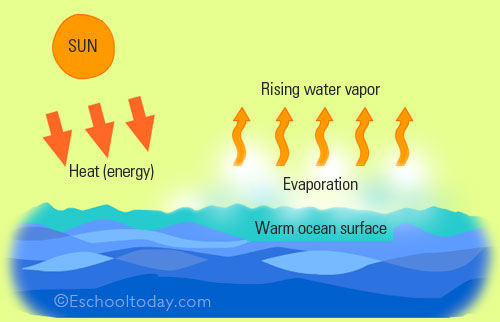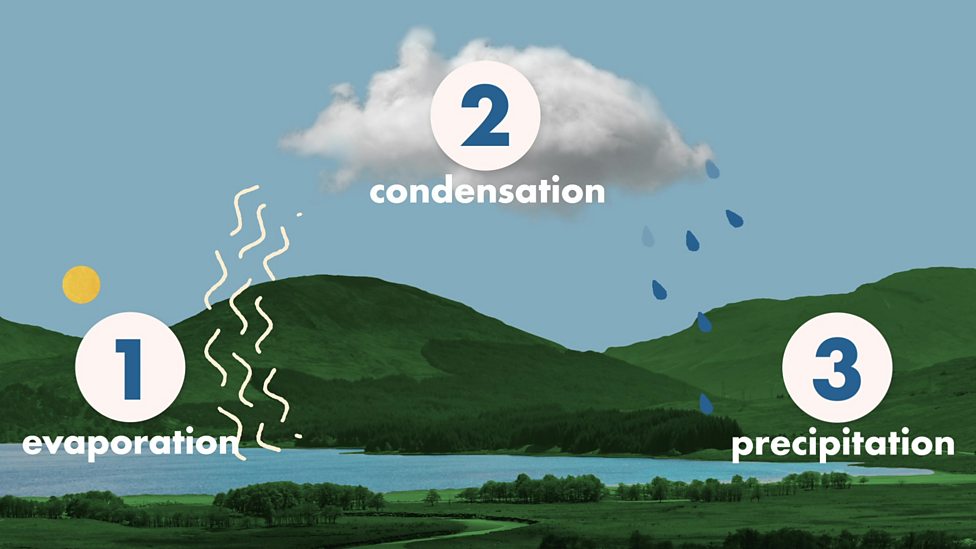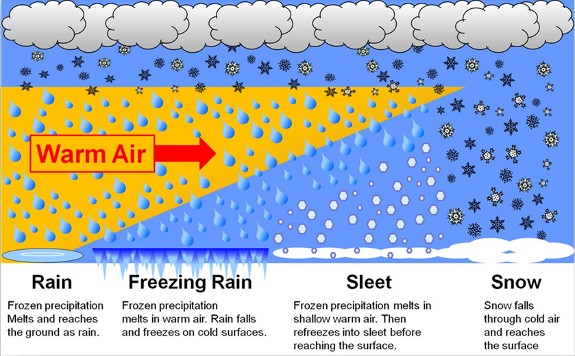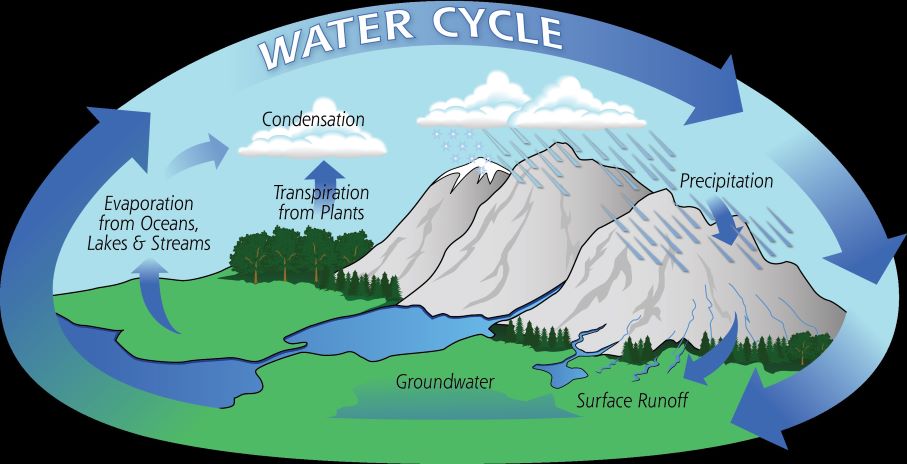We often take raindrops for granted. But each tiny drop holds a story, a journey known as the water cycle. It is a fascinating dance between the sun, the atmosphere, and Earth’s landscape. Let’s take a look at the secret life of a raindrop, exploring its transformation from a minuscule molecule to a force that sculpts our planet.
Act 1: Farewell Ocean, Hello Sky

The story of a raindrop begins in the ocean. Here, the relentless sun beats down, heating the water molecules. As they gain energy, these molecules break free, transforming into invisible water vapor through evaporation. This vapor, lighter than air, rises, carrying the potential for rain.
Temperature plays a crucial role in this act. The warmer the water, the faster the evaporation. This explains why tropical regions experience more frequent rainfall compared to colder areas.
 Image source: BBC Bitesize
Image source: BBC Bitesize
As the water vapor rises, it encounters cooler temperatures. This decrease in temperature slows down the vapor molecules, causing them to bump into each other and lose energy. When they lose enough energy, they cling together, forming microscopic water droplets around tiny particles like dust or salt. This process, called condensation, is the key to cloud formation.
High in the sky, the air is thinner, meaning there’s less pressure to keep the water vapor molecules apart. This lower pressure makes condensation likely to occur at higher altitudes.
Act 3: Precipitation Takes Center Stage
As more and more tiny drops condense, they grow in size. Wind plays a vital role here, pushing these droplets together. Sometimes, the drops meet ice crystals within the cloud. The crystals, being colder, attract the water vapor. They grow larger and larger, eventually becoming snowflakes. As the snowflakes fall to the ground, they may pass through warmer air, melting and becoming raindrops.
 Image source: National Weather Service
Image source: National Weather Service
Here, the concept of saturation comes into play. Air can only hold a certain amount of water vapor. When the air becomes saturated, meaning it cannot hold any more vapor, the excess condenses into water droplets or ice crystals. This leads to the following types of precipitation: rain, snow, sleet, or hail.
Temperature, Pressure, and Wind
This intricate dance of evaporation, condensation, and precipitation is driven by three key forces: temperature, pressure, and wind.
- Temperature. Warmer temperatures promote evaporation, leading to more water vapor in the air. Conversely, colder temperatures lead to condensation and precipitation.
- Pressure. Air pressure affects the ability of air to hold water vapor. Lower pressure allows for faster condensation and cloud formation. This is why rain is more common at higher altitudes where the pressure is lower.
- Wind. Wind plays a vital role in transporting water vapor across the sky. It pushes water droplets and ice crystals together, accelerating the growth of rain and snow. Wind also helps steer weather patterns, determining where precipitation falls.
| Factor | Effect on Water Cycle Stage |
|---|---|
| Temperature (Increase) | Increases evaporation, decreases condensation |
| Temperature (Decrease) | Decreases evaporation, increases condensation |
| Pressure (Decrease) | Speeds up condensation and cloud formation |
| Pressure (Increase) | Slows down condensation and cloud formation |
| Wind | Transports water vapor, pushes droplets together |
Finally, the weight of the accumulated water droplets overcomes the air’s resistance, resulting in water falling to Earth as rain. Depending on the landscape and climate, the rain may infiltrate the ground, become part of rivers and lakes, or even evaporate and begin its journey anew.
The Importance of Water Cycle
 Image source: NASA
Image source: NASA
The raindrop journey is not over with its fall to Earth. When it reaches the ground, the soil may absorb it, evaporate back into the atmosphere, or flow into rivers and eventually reach the ocean, completing the cycle. This continuous movement of water, driven by the sun’s energy and the interplay of temperature, pressure, and wind, sustains life on Earth.
Whenever it rains, think about the amazing journey of each raindrop. It shows how carefully balanced our world’s weather is, and how everything on Earth is connected.






